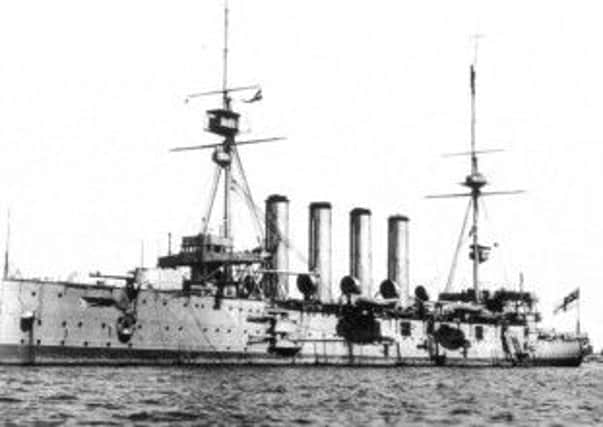Portrush link to sailor killed in largest naval disaster in history


Exactly seven weeks into the First World War, September 22, 1914, three large, but old Royal Navy cruisers, manned mainly be reservists, were sunk by one German submarine, whilst on patrol in the North Sea.
In all 1,459 men were lost off the Dutch coast on the three ships HMS Aboukir, HMS Cressy and HMS Hogue.
Advertisement
Hide AdAdvertisement
Hide AdLieutenant Philip Arthur Graham Kell was just 37 when he died on board HMS Cressy.
Reservist Graham Kell was born in Wales on May 2, 1876, his name appears on the Chatham Naval Memorial.
Kell’s wife, Belissa, was the fourth daughter of General Beresford of Portrush.
Advertisement
Hide AdAdvertisement
Hide AdOn the morning of September 22, 1914 a u-boat, U-9, fired a torpedo which struck Aboukir.
It flooded the engine room, causing the ship to stop.
Aboukir capsized and sank within thirty minutes.
The u-boat resurfaced and observed Hogue and Cressy trying to rescue men from the water.
It then fired two torpedoes at Hogue.
Despite the ship opening fire on u-9, two torpedoes struck Hogue and it too capsized.
The last remaining cruiser, HMS Cressy, was left to face u-9 alone, but it failed.
Advertisement
Hide AdAdvertisement
Hide AdIt was hit by two torpedoes, capsized and floated upside down for forty minutes before sinking.
Despite rescue attempts by Dutch merchant vessels, of the combined crew of 2296, there were only 937 survivors.
1,459 men, mostly from the Royal Naval Reserve had died.
Records show that after Lieutenant Kell’s death, his wife and child stayed with her parents at Craig Dhu Varren, General Beresford’s residence.
Records reveal that Kell’s wife Bellisa went on to marry a Richard Grant in 1918 at Holy Trinity Church in Portrush.
Advertisement
Hide AdAdvertisement
Hide AdGrant, was listed as a ‘Commander’ on the marriage notification.
For weeks after the catastrophe bodies of British sailors were washed ashore on the Dutch coast, a few of these men are buried in cemeteries in Holland.
At least thirteen of 1,459 casualties on board the three ships were related to Ulster.
At the time the disaster shook public opinion and the reputation of the Royal Navy.
Advertisement
Hide AdAdvertisement
Hide AdConcerns were expressed about the vulnerability of these old ships before the sailors even set off.
The surviving cruisers were withdrawn from patrol duties and the reputation of the u-boat as a potent weapon of war was established.
Thanks to the Ulster History Hub for helping us compile this feature.
The Ulster History Hub promote and produce projects and partnerships which are engaging to all members of the community and to instil a sense of pride in their ancestors achievements, they also act as a facilitator to link members of the community to like-minded historical projects and groups in Ulster. If you would like more information visit historyhubulster.co.uk